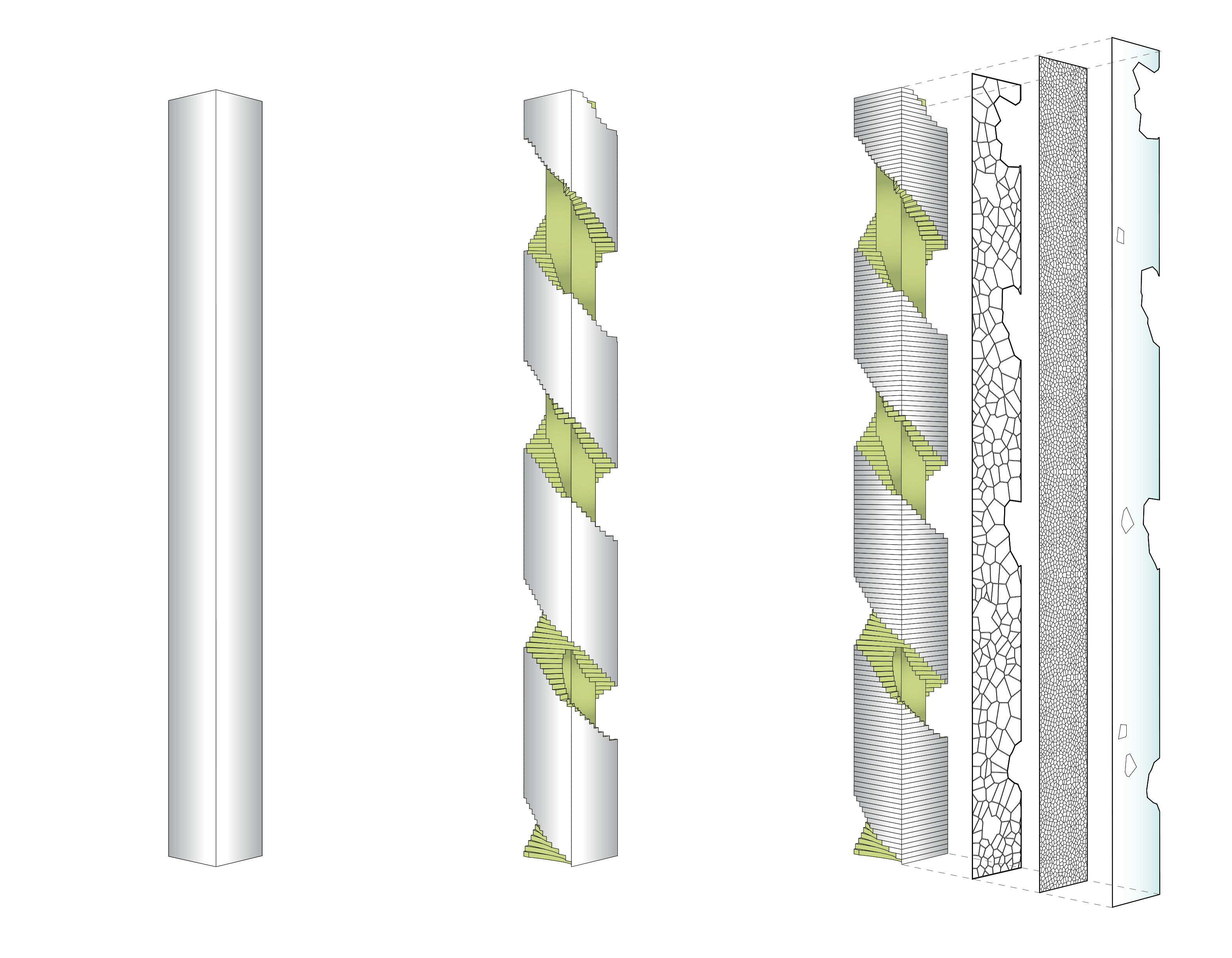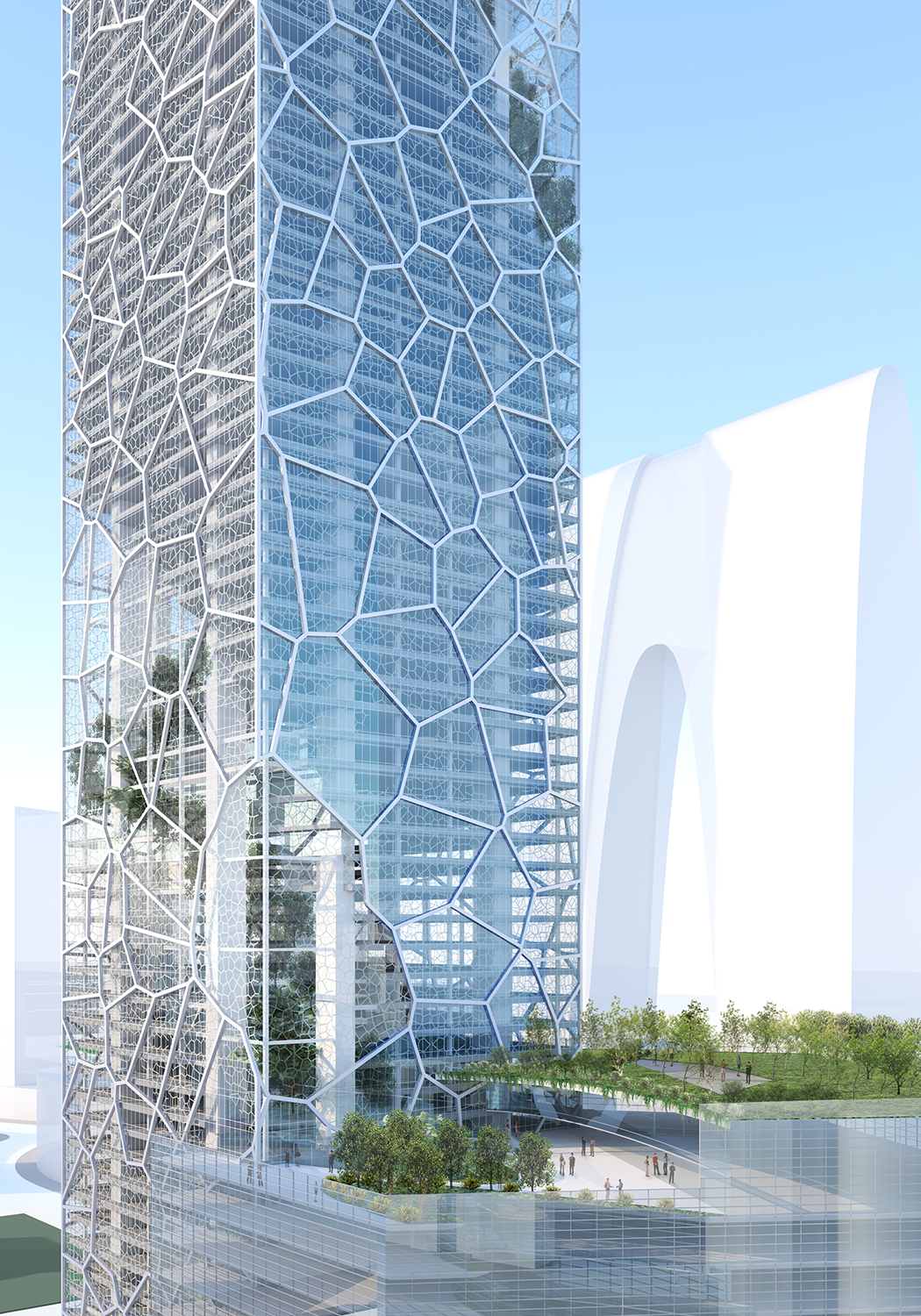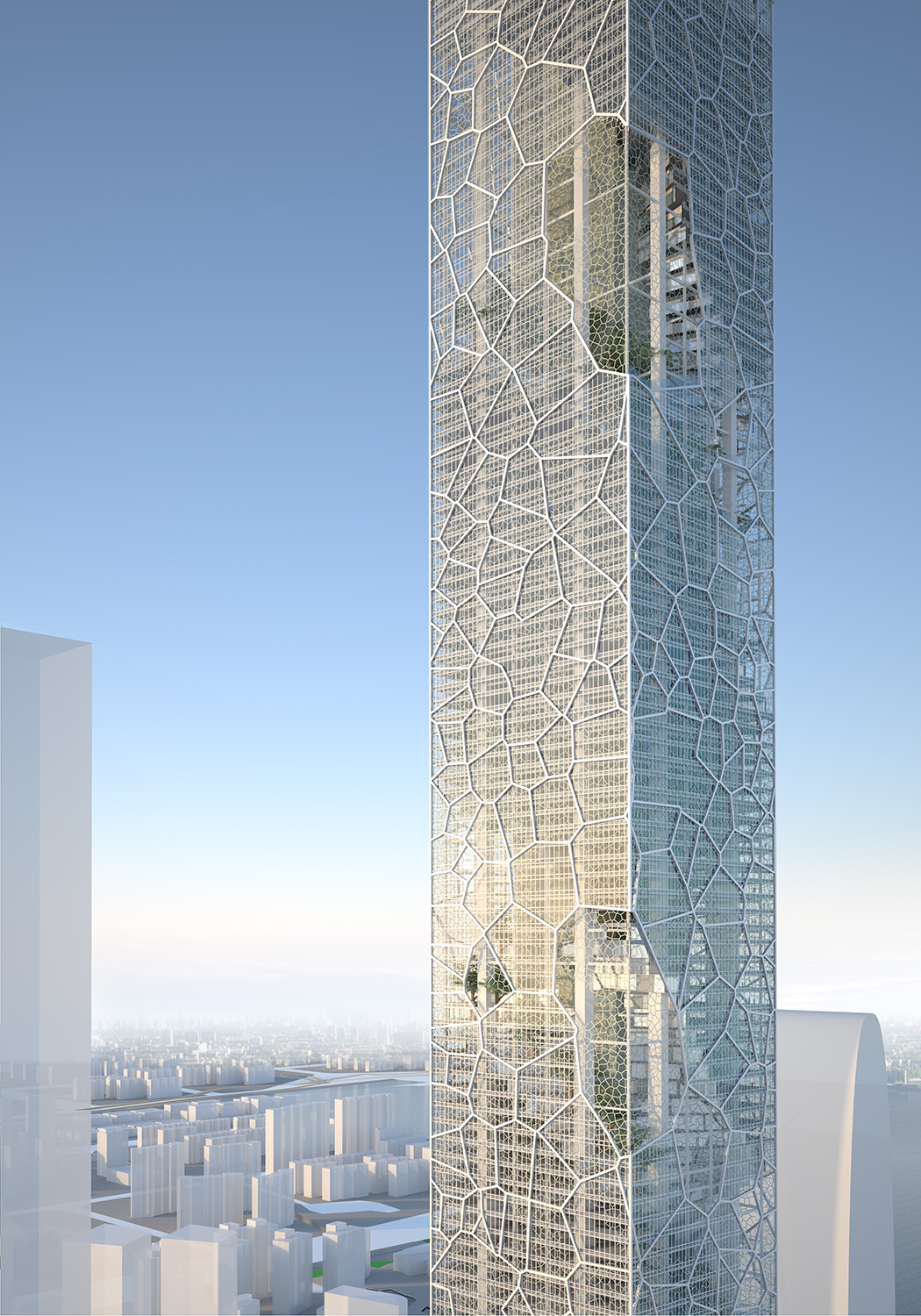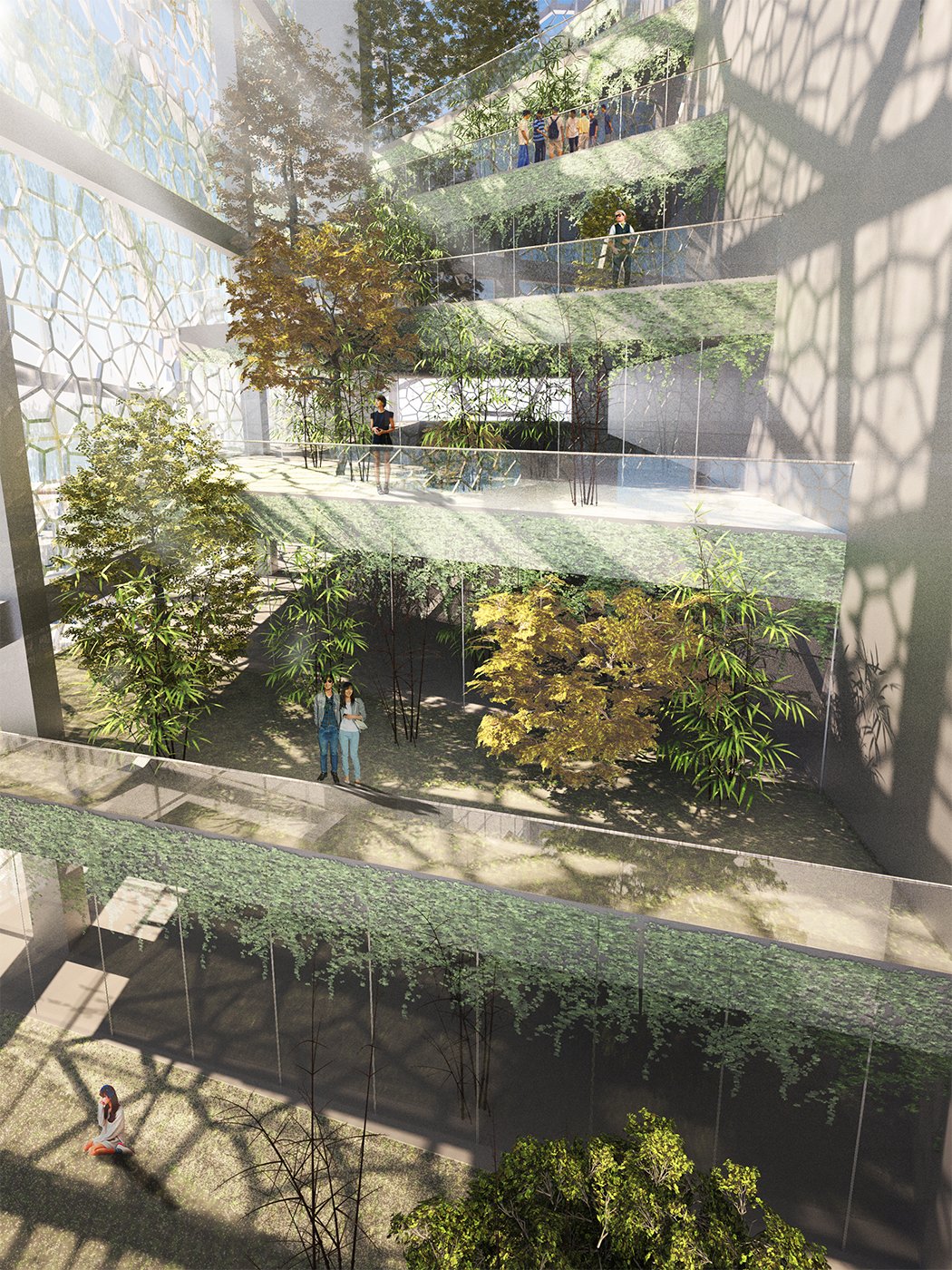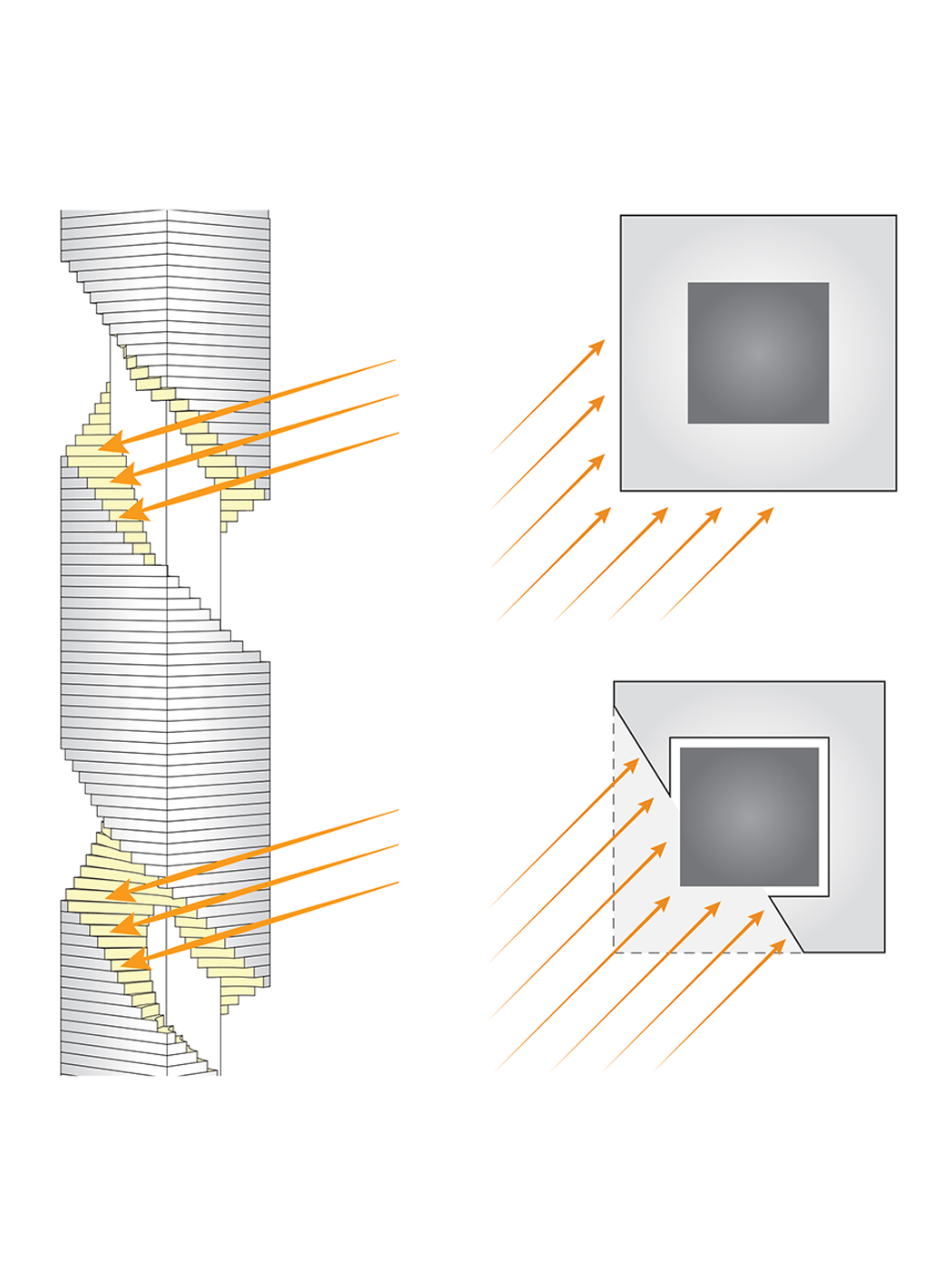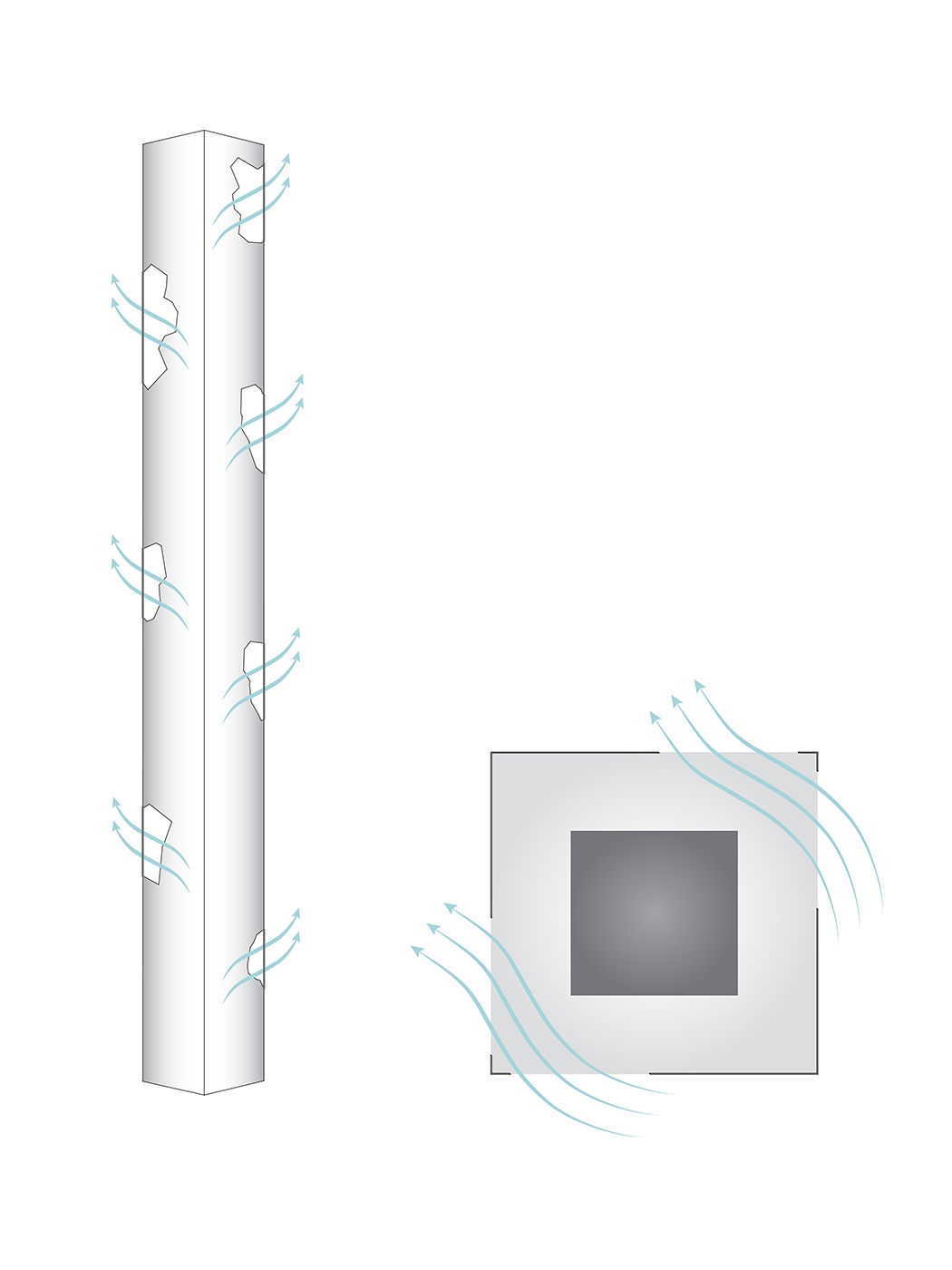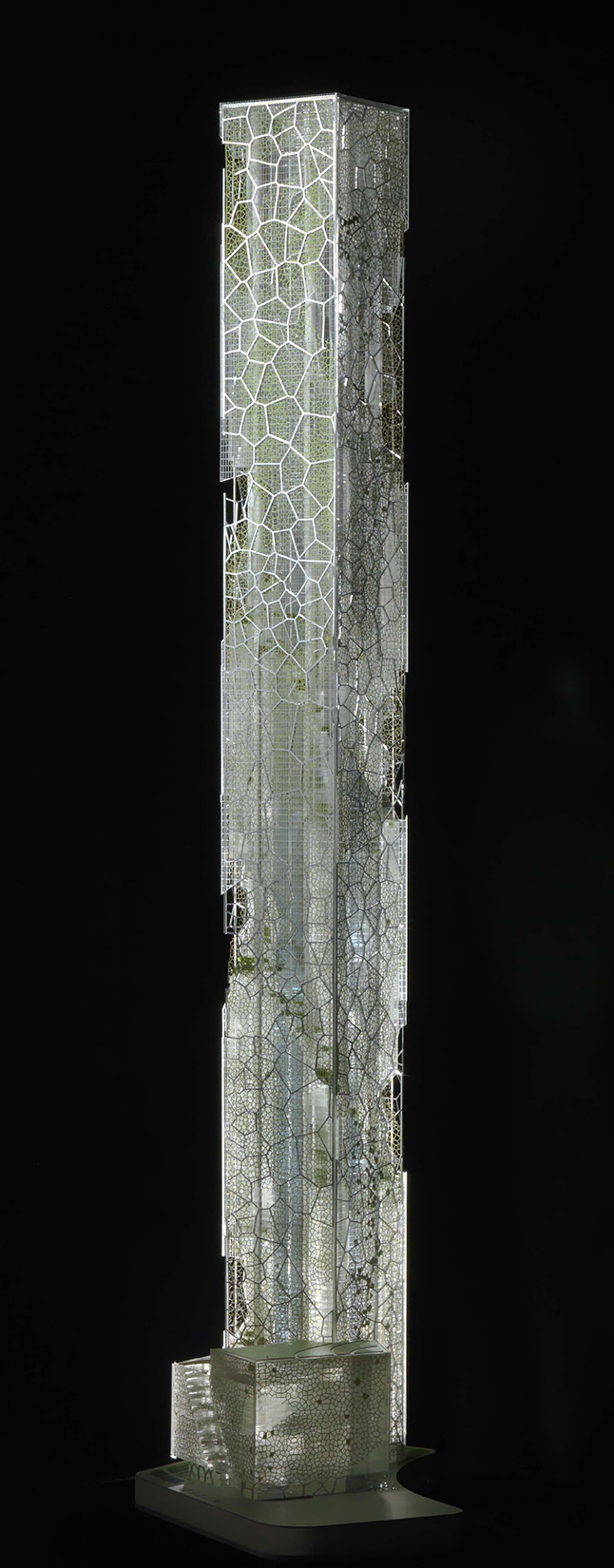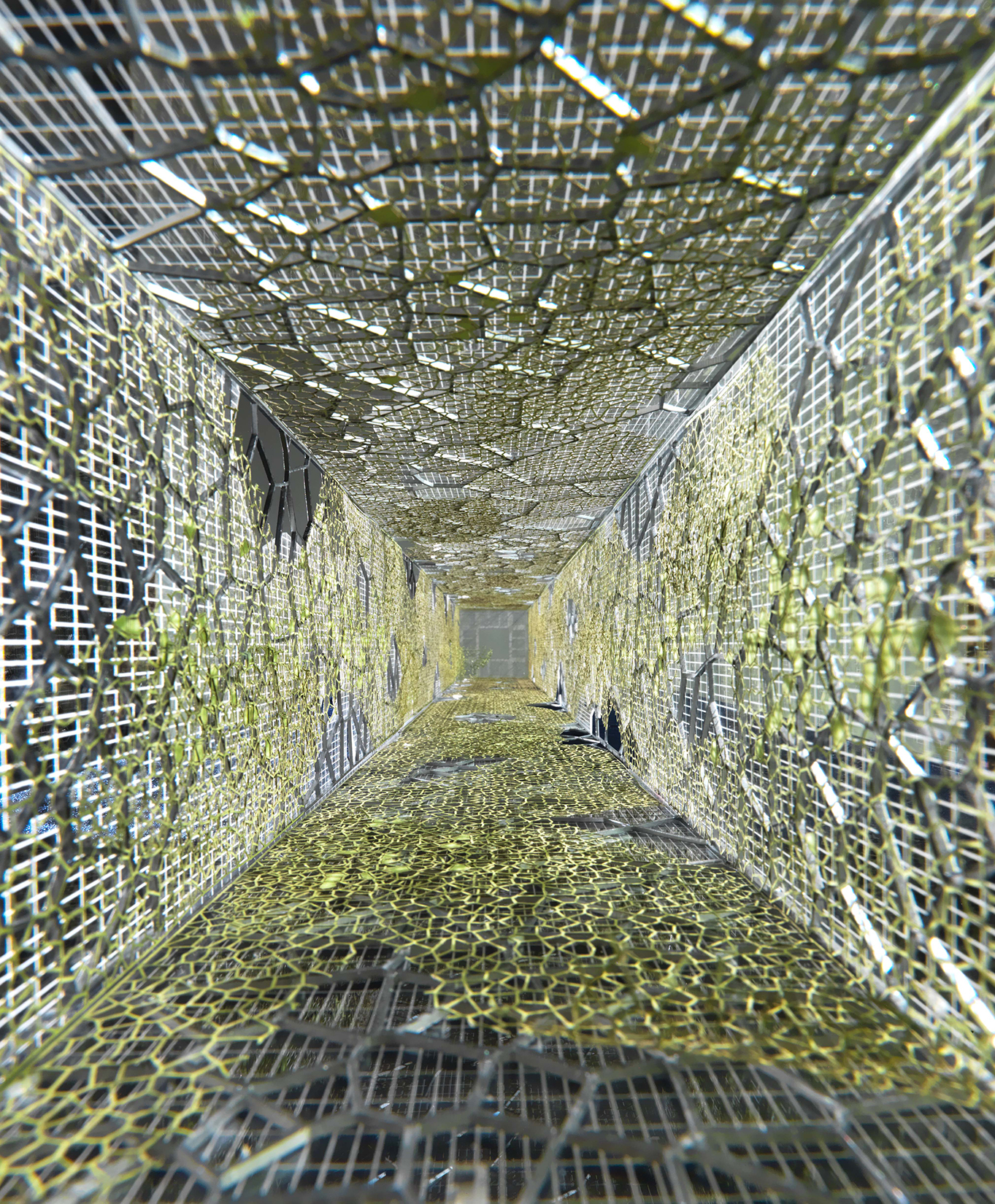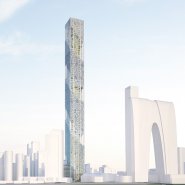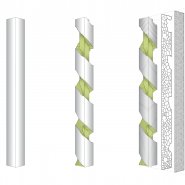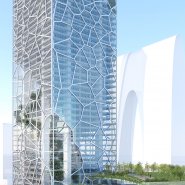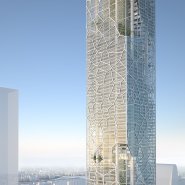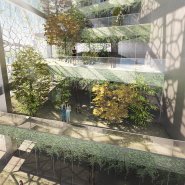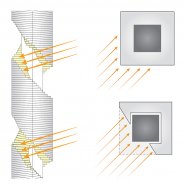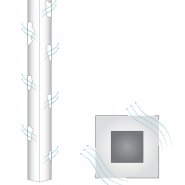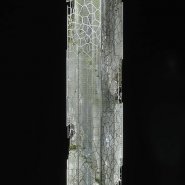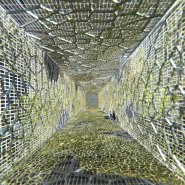The conceptual Biophilic Tower represents a next-generation skyscraper: a self-sustaining, intelligent structure that combines optimal performance with aesthetic beauty focused on human beings’ innate, emotional attraction to nature.
The Biophilic Tower was designed with three key concepts in mind:
- Nature in the space: integrating water elements, courtyard gardens, and views of nature from inside.
- Nature of the space: adapting to human psychological and physiological responses to different spatial configurations, improving concentration and productivity.
- Natural analogues: using materials and patterns that evoke nature, including building elements that mimic shells and leaves, furniture with organic rather than geometric shapes, and visible wood grain.
One of the tower’s main features is a continuous vertical garden that wraps around the building from grade to the top. Each of the 119 floors will have access to this lush atrium space, giving occupants a direct multi-sensory connection to nature. The garden will be naturally ventilated, creating a vertical representation of traditional Suzhou gardens.
The tower design also makes use of fractal patterns, which appear the same from near as from far, and can positively affect human neural activity, increasing work productivity and physical and mental health. The design uses a common fractal pattern, the Voronoi diagram, as another layer to the natural environment created within the tower. The Voronoi pattern is incorporated into the curtainwall design as a solar shading strategy to help reduce heat gain in the internal occupied space and the ventilated gardens.
Biophilic Tower is shaped to take full advantage of the natural light and views available on the site. By carving the atrium space deep into the massing of the building, natural light is allowed to enter the building beyond the perimeter envelope and infiltrate into the floor plates. The tower also offers stunning views east to Jinji Lake and west to the Old City for occupants on the north and south sides of the building.

